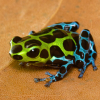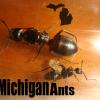Let me see if I've got this right? Please correct the parts that I have wrong
Different ways of finding queens:
1. Digging founding chambers up
Weather: Recently rained (within the past week if on the colder side, within the last 3 days if on the warmer side)
Temperature: Needs to hit around ~70 at some point and the nuptial flight schedule needs to (roughly) match up
Depth: ~6 inches to a full foot down or so
Also: During the above conditions you can also find them by turning over rocks
2. Finding them walking around during a nuptial flight
Weather: Recently rained or VERY humid (95% of the time the 1st condition needs to be met)
Temperature: Needs to hit around 70 and nuptial flight schedule needs to match up
Time: Afternoon (4-8pm) or very early morning? To catch the nuptial flight you have to be IN the location as it's happening. I'm not sure how long a single nuptial flight will last.
2. Nabbing them from pools
I don't know much about this method. You go to pools and find them and then what?
3. Breaking apart dead logs / pulling back bark
I don't know much about this method either.
4. Black lights at night
I don't quite follow how this works either: I thought it had to be very warm for them to fly. Typically nights cool down a lot-- does this only work during warmer months? Will they fly even though it's very cool at night if it hits 85 or 90 during the day?
Thanks
















